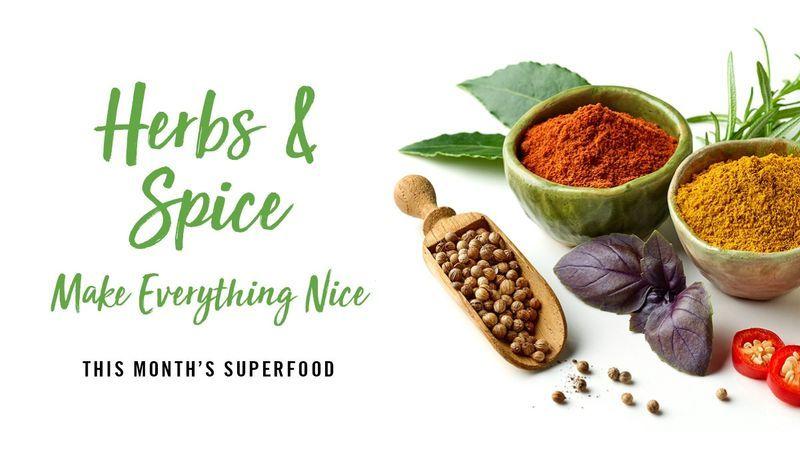Has a meal ever made your tastebuds tingle? Dipping into a certain flavorful curry dish, scooping up a chip of spicy salsa or diving into a slice of rich cake can be enough to make you rethink your whole pantry.
For the most intense and powerful flavors, however, there is a lot of help from herbs and spices, Campus Dining’s superfood of the month. The curry dish may have been packed with cumin and garam masala, the salsa with a bunch of cilantro and the cake no doubt with a dash of cinnamon and cocoa. These herbs and spices are the lesser known superheroes working in harmony behind the scenes to create those mouthwatering flavors we crave.
So what exactly are herbs and spices? Both are things derived from plants to season and flavor a recipe, but not as the main ingredient. The only difference between the two is the part of the plant they originate from — herbs are the leaves or other green parts of a plant, and spices are the roots, seeds and any other element of the plant.
There are myriad ways to get creative and spice up your dishes on a daily basis. Try adding cayenne pepper atop any sauce for a spicy kick, dill with salmon, thyme with breakfast eggs or turmeric in any veggie stir fry.
Herbs and spices have tons of benefits besides making food smell and taste delicious. Many contain minerals, nutrients and antioxidants that are great for your health. Spices also make great preservatives — just remember to store them properly.
When using spices, especially ones that are new to you, always start with low quantities and gradually add more. It’s important to continuously taste test what you’re cooking so you can make sure it’s the exact flavor you want.

